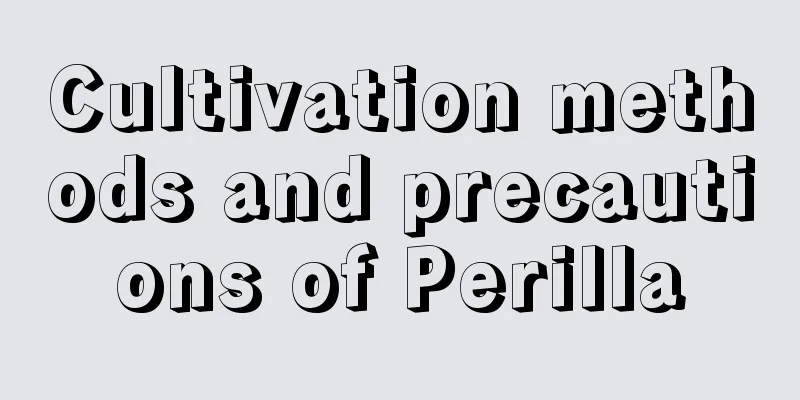How to plant peppers in summer (how to sow, raise and manage peppers)

|
Regarding pepper seedling cultivation, it can be done all year round for greenhouse cultivation, but for open-air cultivation, it is generally carried out in spring, from March to April. Of course, for greenhouse cultivation, summer seedling cultivation is generally carried out at the end of July, and harvesting is carried out at the end of winter . So what issues should be paid attention to during pepper seedling cultivation, and what precautions should be taken during transplanting and growth? Brother Peng will answer the following points. 1. Cultivating strong seedlings, what problems should be faced in summer seedling cultivationThe summer is hot and rainy, with continuous rain and changeable weather, which are not conducive to the growth of pepper seedlings. In addition, the sky is clear after rain and the air humidity is high, which can easily lead to the occurrence of diseases. High temperatures can easily cause sunburn and loss of vitality of too-tender pepper seedlings. The influence of multiple factors can easily cause devastating harm to too-tender pepper seedlings. 2. Precautions for pepper seedling cultivationAccording to the climate characteristics of summer, what should be paid attention to during the summer seedling raising of peppers, and how to prevent and control 1. Flood preventionSummer is a rainy season, and it is particularly easy for too much rain to cause waterlogging in the seedbed. Therefore, it is necessary to make a prediction before raising the seedlings in the early stage, raise the seedbed, or build it in a high place, and dig drainage ditches around it to prevent the seedlings from being waterlogged during the seedling raising period. 2. Drought preventionIn addition to preventing waterlogging in summer, we must also prevent drought. Due to the high temperature and rapid evaporation of water, the soil is prone to dryness, causing the seedlings to dehydrate and wilt. At this time, we must water them in time, water them frequently with small amounts, and make sure to water them thoroughly. 3. Prevent heavy rain and hailSevere convective weather is common in summer, and heavy rain and hail occur frequently, so be sure to check the weather forecast at all times and take precautions in advance. 4. Prevent diseases and pestsIn the hot and dry summer, peppers are prone to insect pests. You can spread plant ash and furadan around the seedbed in advance for preventive treatment. In the summer, the humidity is high and diseases such as gray mold and damping-off are prone to occur. We can prevent these diseases in advance by spraying the fungicide carbendazim. 5. Prevent strong sunlightThe summer sun is strong and excessive exposure to the sun can easily burn the pepper seedlings and cause them to wilt. Take shading measures in advance and set up shade nets for shade. 6. Prevent excessive growthDue to the high temperature in summer, when there is sufficient water and fertilizer, the pepper seedlings will easily grow too tall, resulting in thin stems of the plants, which is not conducive to cultivating strong seedlings. At this time, it is necessary to strengthen the ventilation of the shed and water the seedbed properly, watering it when it is dry and wet. It should be noted in particular that seedling cultivation in summer is much more complicated and difficult than in spring. The seeds must be germinated before sowing to increase the germination rate of peppers. In view of the complex climate in summer, when choosing varieties, you must choose varieties that are disease-resistant, heat-resistant and waterlogging-resistant. In short, there are many things to pay attention to when raising seedlings in summer, such as preventing insects and diseases, preventing waterlogging and drought. This requires us to pay more attention to the seedbeds and check the weather forecast frequently, so as to reduce unnecessary losses. |
>>: How to propagate roses using rose seeds (rose seed planting methods and precautions)
Recommend
Where are the planting conditions and climate suitable for Codonopsis pilosula?
Codonopsis planting conditions When planting Codo...
Which zodiac sign is the golden branch and jade leaf
1. Zodiac sign The golden branches and jade leave...
When should winter melon be planted?
Winter melon is not only tender and delicious wit...
When and what to look out for when repotting Monstera deliciosa When is the best month to repot Monstera deliciosa
Monstera is more suitable for growing in soil wit...
The meaning of pepper wood
1. Introduction The meaning of pepper wood is to ...
Will the method of growing pumpkins on the balcony bear fruit?
It is good to grow pumpkin on the balcony. It is ...
Keeping water spinach at home is nutritious and has many benefits, and the key is that it is easy to grow
Water spinach is a vegetable that we often eat at...
How to save kiwi seeds
Kiwifruit seeds When the kiwi fruit is ripe, it c...
How does Christmas cactus survive the summer?
Summer is the dormant period of Christmas cactus,...
The difference between creeping vine and sedum
Creeping sedge Crassulaceae is a perennial herb o...
The correct way to soak passion fruit in water
1. Take the pulp Wash the passion fruit, cut it i...
What is the best fertilizer for blueberry fertilization? If you use the right fertilizer, blueberries will grow faster.
Because the growing conditions of blueberries are...
Cultivation methods and precautions of flower peony
1. Maintenance methods 1. Temperature: Judging fr...
How to grow Elaeocarpus edulis well
1. Maintenance methods 1. Temperature: Elaeocarpu...
How to Propagate White Orchid
Grafting The most recommended method for propagat...









